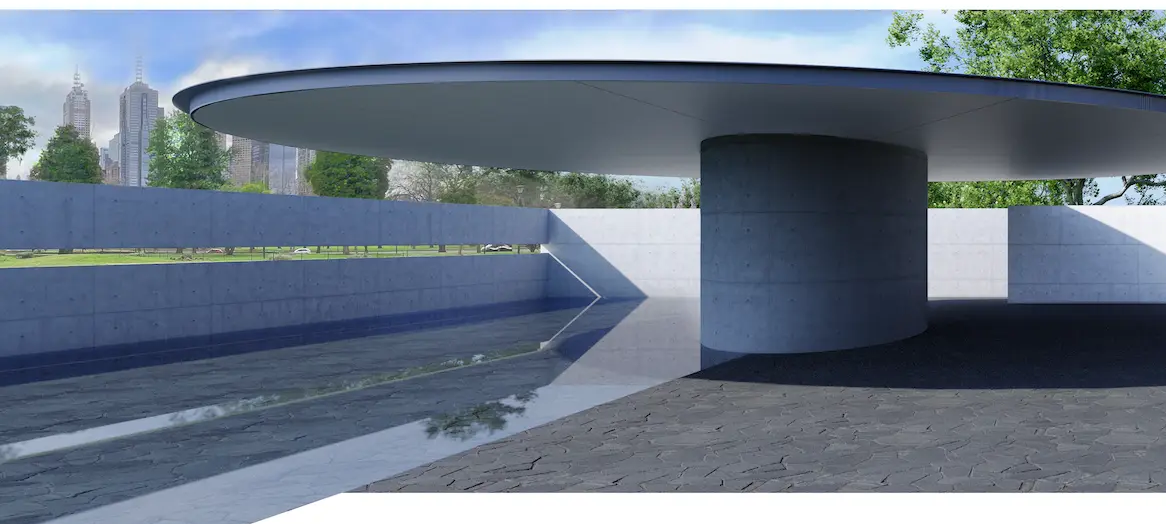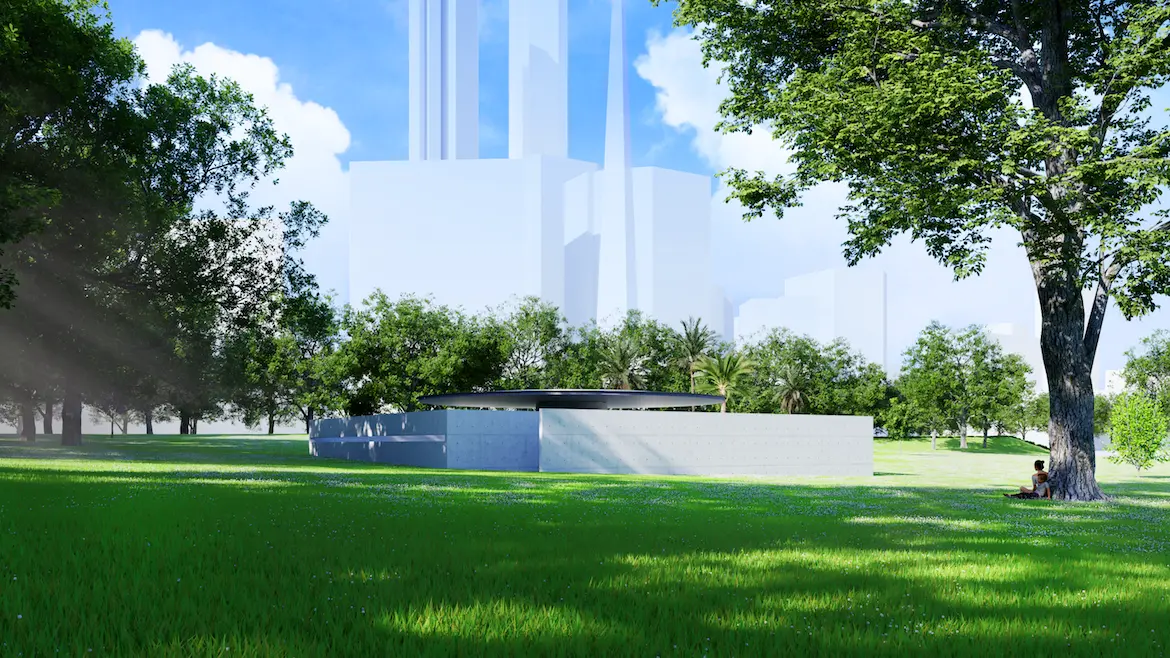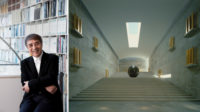Just shy of two months after announcing that Tadao Ando had been tapped by Australia’s Naomi Milgrom Foundation to design the tenth iteration of the public art nonprofit’s annual MPavilion, the autodidact Japanese architect’s design for the annual installation has been unveiled.
Naturally, Ando’s design for MPavilion 10 showcases the “precise, assured” use of his oeuvre-defining material: cast-in-place concrete.
Anchoring a summertime art and design festival held at Queen Victoria Gardens in Melbourne, the monumental installation features a disc-shaped, aluminum-clad canopy resting on a central concrete column. Flanking the pavilion’s oversized circular sunshade are a series of concrete walls that create a tranquil, semi-enclosed place of respite that the foundation likens to a traditional Japanese garden. “A long (roughly 64-feet) horizontal opening running both the length of the north and south walls frames views of downtown Melbourne and the parklands, connecting the city and lush greenery of Queen Victoria Gardens to MPavilion's interior,” a press announcement detailed. “The geometric forms and symmetry are reinforced by an internal arrangement that is half paved, and half reflecting pool, which mirrors the pavilion canopy, sky, city, and surrounding nature.”
“The design began with a desire to create a sense of eternity within Melbourne’s garden oasis,” elaborated Ando. “I wanted to create an experience that will last forever in the hearts of all who visit. I imagine an architecture of emptiness, that lets light and breeze enter and breathe life into it. A place that resonates with the environment, becomes one with the garden, and blossoms with infinite creativity.”

Interior view of MPavilion 10. Image courtesy Tadao Ando Architect & Associates
Joining Ando and a larger team of designers, engineers, and builders hailing from Japan and Australia to conceive and construct this nature-embracing “architecture of emptiness” is celebrated Australian architect Sean Godsell in the role of executive architect. Melbourne-born Godsell was designer of the inaugural MPavilion commission. (In a tidy, serendipitous twist, Osaka, birthplace of Pritzker Prize–winning Ando and homebase of his namesake firm, and Melbourne are sister cities.) In addition to Godsell, past MPavilion designers are: Amanda Levete of AL_A, (U.K., 2015); Rem Koolhaas and David Gianotten of OMA (Netherlands, 2017); Bijoy Jain of Studio Mumbai (India, 2016); Carme Pinós (Spain, 2018); Glenn Murcutt (Australia, 2019); Francesco Magnani and Traudy Pelzel of MAP Studio (Italy, 2021); and Rachaporn Choochuey of all(studio) (Thailand, 2022). Ando, who MPavilion commissioner Naomi Milgrom praised for creating work that “radically affects the way we perceive the world around us,” is the seventh architect of this continent-spanning group to make an Australian debut with the MPavilion commission.
As is tradition, the tenth annual MPavilion festival—a “cultural laboratory” per the foundation—will span five months and feature a lively slate of design-focused programming including talks and lectures, music and dance performances, kid-friendly events, and more. More details will be announced as the yet-to-be-provided festival kick-off date draws closer. Like with past MPavilions, Ando’s contribution will be relocated following the close of the festival to a new, permanent location for continued community use.






